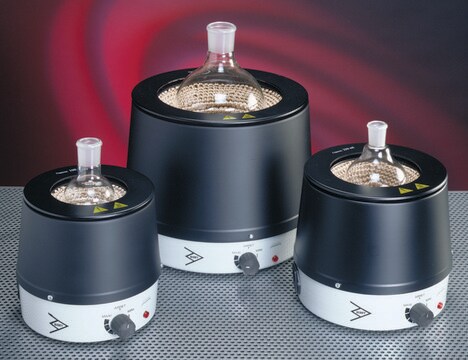21217
GC Stationary Phase
phase 1,2,3-tris(2-Cyanoethoxy)propane (TCEP), bottle of 50 g
Iniciar sesiónpara Ver la Fijación de precios por contrato y de la organización
About This Item
Número CE:
Código UNSPSC:
23151817
Productos recomendados
envase
bottle of 50 g
Parámetros
0-175 °C temp. range
técnicas
gas chromatography (GC): suitable
grupo activo de la matriz
1,2,3-tris(2-Cyanoethoxy)propane (TCEP) phase
solubilidad
chloroform/methanol (2:1): soluble
tipo de columna
packed GC
Categorías relacionadas
Descripción general
GC methods are divided into two classes depending on the nature of stationary phases; gas-solid chromatography (GSC) and gas-liquid chromatography (GLC). GSC has solid adsorptive material and solute particles are removed from mobile phase by electrostatic forces. GLC has a thin layer of liquid coated or bonded on the surface of an inert particle or on the walls of the column where solute particles are retained in the liquid phase based on their partition coefficients. The primary necessity of a stationary phase is to provide sample separation sustaining phase integrity over a reasonable period of time. It should be stable for the chemical and thermal changes. Selectivity, peak symmetry, analysis time, degree of separation, peak tailing are few parameters to consider for choosing a stationary phase. 1,2,3-tris(2-Cyanoethoxy)propane (TCEP) is diviylimidazolium bistriflamide ionic liquid which improves oxygen and moisture stability.
Synthesized specifically to be purer, of narrow molecular weight range, and without trace catalysts or impurities for use as a GC stationary phase.
Aplicación
TCEP may be used as stationary phase, to study the adsorption effects on the surface of the support/or stationary phase in gas-liquid partition chromatography.
Código de clase de almacenamiento
10 - Combustible liquids
Clase de riesgo para el agua (WGK)
WGK 2
Punto de inflamabilidad (°F)
Not applicable
Punto de inflamabilidad (°C)
Not applicable
Equipo de protección personal
Eyeshields, Gloves
Elija entre una de las versiones más recientes:
Certificados de análisis (COA)
Lot/Batch Number
Lo sentimos, en este momento no disponemos de COAs para este producto en línea.
Si necesita más asistencia, póngase en contacto con Atención al cliente
¿Ya tiene este producto?
Encuentre la documentación para los productos que ha comprado recientemente en la Biblioteca de documentos.
Adsorption effects in gas-liquid partition chromatography.
Komaita, Toshiki
Journal of Chromatography A, 114, 1-14 (1975)
Kenneth R. Seddon, Natalia V. Plechkova
Ionic Liquids Uncoiled: Critical Expert Overviews (2012)
Dominic Kamps et al.
Cell reports, 33(9), 108467-108467 (2020-12-03)
Local cell contraction pulses play important roles in tissue and cell morphogenesis. Here, we improve a chemo-optogenetic approach and apply it to investigate the signal network that generates these pulses. We use these measurements to derive and parameterize a system
Joost Snijder et al.
Immunity, 48(4), 799-811 (2018-04-19)
Epstein-Barr virus (EBV) is a causative agent of infectious mononucleosis and is associated with 200,000 new cases of cancer and 140,000 deaths annually. Subunit vaccines against this pathogen have focused on the gp350 glycoprotein and remain unsuccessful. We isolated human
Gilman Dionne et al.
Neuron, 99(3), 480-492 (2018-07-31)
The tip link, a filament formed by protocadherin 15 (PCDH15) and cadherin 23, conveys mechanical force from sound waves and head movement to open hair-cell mechanotransduction channels. Tip-link cadherins are thought to have acquired structural features critical for their role in
Nuestro equipo de científicos tiene experiencia en todas las áreas de investigación: Ciencias de la vida, Ciencia de los materiales, Síntesis química, Cromatografía, Analítica y muchas otras.
Póngase en contacto con el Servicio técnico



